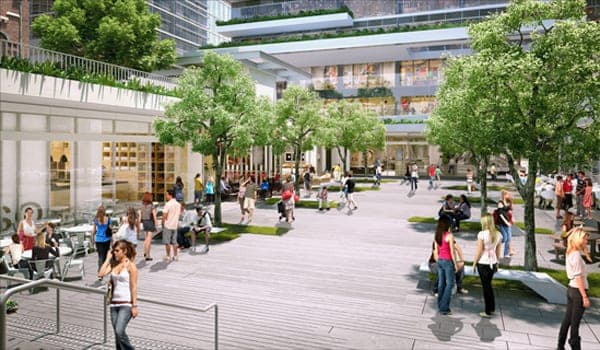Central, soon to be Sydney’s most exciting new retail precinct, has slowly been making its way up into the city’s skyline over the past few years.
I recently had the exciting opportunity to take an inside look behind the Central Park construction fence. After donning my hardhat and a fetching bright yellow vest, I was given a tour of the retail space, which is due to be open this spring.
Spanning 16 000 square metres over six levels, the most impressive feature of Central is the abundance of natural light, made possible by the glass walls.
The natural feeling will be emphasised by greenery on each floor, similar to the shrubs snaking around the glass panels outside, and the park sitting just a few steps from the shops.
The six floors will be split between fashion and homewares stores, food outlets, bars, and entertainment, providing an exciting new opportunity for small businesses to snap up the perfect retail space.
The developers, Frasers Property and Sekisui House, aim for Central Park to define Sydney’s ‘downtown’.
“Broadway is Sydney’s third busiest pedestrian street…[it] experiences approximately 74 000 pedestrian movements per day,” says Guy Pahor, Frasers Property’s CEO.
He also highlighted the area’s proximity to Central station and its youthful demographic, with residents in suburbs like Sydney, Haymarket, and Glebe earning approximately 30 percent more than Sydney’s metropolitan average.
The Central Park precinct will be home to almost 2000 apartments, with a population of one million people, or almost a quarter of Sydney’s population, living within a 10km radius.
“These characteristics, combined with the cutting edge physical retail environment we are delivering, makes Central a highly desirable opportunity for both national and international retailers,” Pahor says.
The old Carlton and United Brewery building is also a key aspect of the development, soon to be transformed into a restaurant hub.
It’s clear that Central will be a curious mix between the past and the future, preserving a slice of Sydney’s history while also creating a modern new space for people to enjoy.

